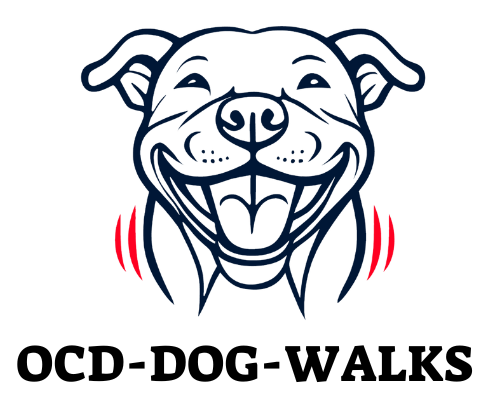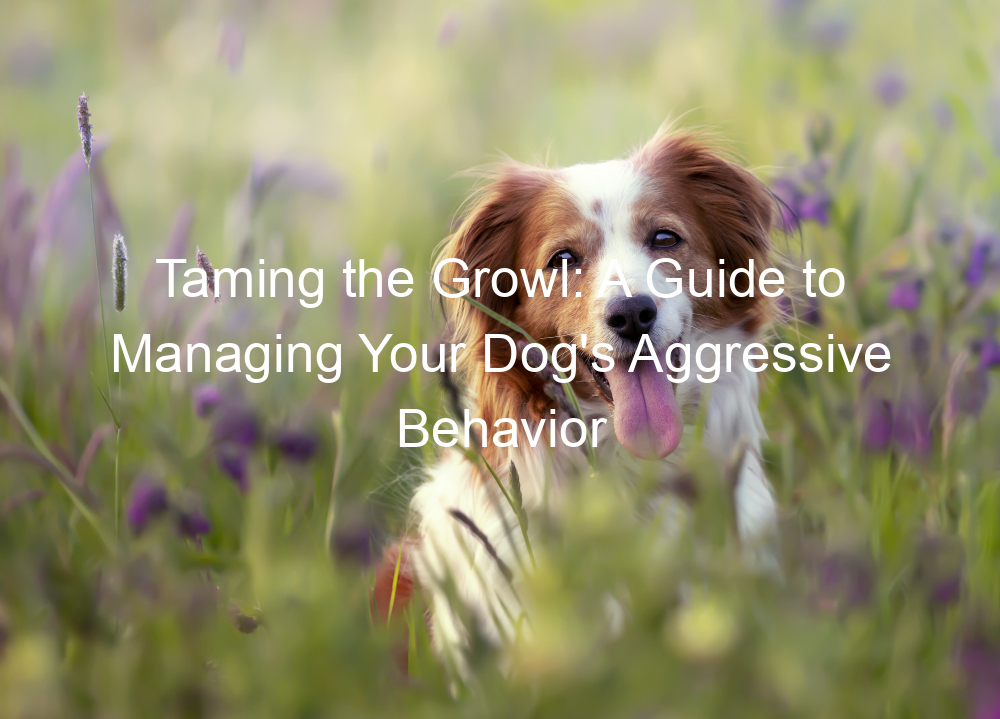Introduction to Dog Aggression Management
Managing dog aggression is a crucial aspect of responsible pet ownership. It’s not only about ensuring the safety of people and other animals, but also about helping your furry friend live a happier, less stressful life. In this section, we’ll explore the importance of managing dog aggression and provide an overview of aggressive behavior in dogs.
- Understanding the Importance of Managing Dog Aggression
- Overview of Aggressive Behavior in Dogs
In the following sections, we’ll delve deeper into understanding dog behavior, explore techniques for training aggressive dogs, and provide practical tips for managing dog aggression. Stay tuned to learn more about how to help your dog become a calmer, happier, and more sociable member of your family.
Understanding Dog Behavior
Understanding your furry friend’s behavior is key to building a strong and healthy relationship with them. Dogs, just like humans, have a wide range of emotions and behaviors. Let’s delve into some common dog behavior problems, particularly aggression.
Common Dog Behavior Problems
While dogs can exhibit a variety of behaviors, we will focus on aggression, a common issue that dog owners face.
- Identifying signs of aggression
- Understanding the causes of aggressive behavior in dogs
Remember, aggression is a serious behavior problem in dogs. If not addressed properly, it can lead to dangerous situations. It’s always best to consult with a professional if you’re dealing with an aggressive dog.
Dog Behavior Modification
Modifying a dog’s aggressive behavior can seem like a daunting task. But, with the right techniques and a lot of patience, it’s entirely possible. Let’s explore some of these methods.
- Techniques for Modifying Aggressive Behavior
- Positive Reinforcement: Reward your dog for good behavior. This can be a treat, a toy, or even just a lot of praise. The idea is to make good behavior more rewarding than bad behavior.
- Redirection: If your dog starts to show signs of aggression, try to redirect their attention to something more positive. This could be a toy, a treat, or even just a different activity.
- Professional Help: If your dog’s aggression is severe or if you’re not comfortable handling it on your own, consider seeking help from a professional dog trainer or behaviorist. They can provide you with more targeted strategies and support.
- Case Study: Successful Dog Behavior Modification
Remember, every dog is unique. What works for one might not work for another. It’s important to be patient and consistent in your approach. And don’t hesitate to seek professional help if needed.
Aggressive Dog Training
Aggressive behavior in dogs can be a serious issue, not just for the dog, but for the owner and others around them. However, with proper training techniques, it is possible to manage and even eliminate this behavior. Let’s delve into some effective training techniques for aggressive dogs.
Training Techniques for Aggressive Dogs
Training an aggressive dog requires patience, consistency, and the right techniques. Here are two key methods that can help:
- Positive Reinforcement Techniques
- Dealing with Aggressive Dogs During Training
Training an aggressive dog can be challenging, but with patience and the right techniques, it’s entirely possible to transform an aggressive dog into a calm, well-behaved pet. Remember, if you’re struggling, don’t hesitate to seek help from a professional dog trainer or behaviorist.
Preventing Aggression During Training
Training a dog can be a rewarding experience, but it can also be challenging when dealing with aggression. It’s important to understand that aggression is often a sign of fear or discomfort. Here are some steps to prevent aggression during training and key takeaways for training aggressive dogs.
- Steps to Prevent Aggression
- Stay Calm: Dogs can sense your emotions. If you are calm and relaxed, your dog is more likely to feel the same way.
- Use Positive Reinforcement: Reward your dog for good behavior. This can be a treat, a toy, or simply praise. This encourages them to repeat the behavior.
- Know Your Dog’s Triggers: Every dog has things that make them uncomfortable or scared. Knowing these can help you avoid situations that might trigger aggression.
- Take Breaks: Training can be stressful for a dog. Taking regular breaks can help prevent your dog from becoming overwhelmed and acting out.
- Key Takeaways for Training Aggressive Dogs
- Patience is Key: Training takes time. Don’t expect immediate results, and never punish a dog for not understanding a command.
- Consistency is Crucial: Dogs learn through repetition. Be consistent with your commands and rewards to help your dog understand what you want from them.
- Seek Professional Help if Needed: If your dog’s aggression continues despite your best efforts, it may be time to seek help from a professional dog trainer or behaviorist.
Remember, every dog is unique. What works for one might not work for another. The key is to be patient, consistent, and understanding. With time and effort, you can help your dog become a well-behaved and happy member of your family.
Managing Dog Aggression
Managing dog aggression can be a challenging task. However, with the right strategies and understanding, it is possible to turn an aggressive dog into a calm and friendly pet. Let’s explore some effective strategies and a case study on managing canine aggression.
Strategies for Managing Canine Aggression
There are several strategies that can help manage canine aggression. These methods are not only effective but also promote a healthy relationship between you and your dog.
- Effective strategies for managing aggression
- Positive Reinforcement: Rewarding your dog for good behavior can encourage them to act appropriately. Treats, praises, or toys can be used as rewards.
- Proper Socialization: Exposing your dog to different environments, people, and other animals can help them become more comfortable and less aggressive.
- Professional Training: If your dog’s aggression is severe, consider seeking help from a professional dog trainer or behaviorist.
- Case Study: Successful management of canine aggression
In conclusion, managing dog aggression requires patience, consistency, and the right strategies. Remember, every dog is unique, and what works for one might not work for another. Therefore, it’s essential to understand your dog’s behavior and needs to manage their aggression effectively.
Dealing with Aggressive Dogs
Managing an aggressive dog can be a challenging task. However, with the right approach and understanding, you can help your furry friend become more calm and sociable. Here are some steps and key takeaways to help you deal with dog aggression.
- Steps for Dealing with Aggressive Dogs
- Key Takeaways for Managing Dog Aggression
Dealing with an aggressive dog can be challenging, but with understanding, patience, and the right approach, you can help your dog become a more sociable and happier pet. Always remember, every dog is unique and what works for one might not work for another. So, it’s important to understand your dog and tailor your approach accordingly.
Conclusion: Taming the Growl
We’ve covered a lot of ground in this guide, and it’s time to wrap up and review what we’ve learned about managing your dog’s aggressive behavior. Remember, understanding and training aggressive dogs is not an overnight process, but with patience and consistency, you can help your furry friend become a more relaxed and well-behaved member of your family.
- Recap of managing your dog’s aggressive behavior
- Final thoughts on understanding and training aggressive dogs
In conclusion, taming the growl is not an impossible task. With understanding, patience, and the right techniques, you can help your dog overcome their aggression and live a happier, more peaceful life. Remember, the journey may be challenging, but the reward of a well-behaved, loving companion is well worth the effort.






